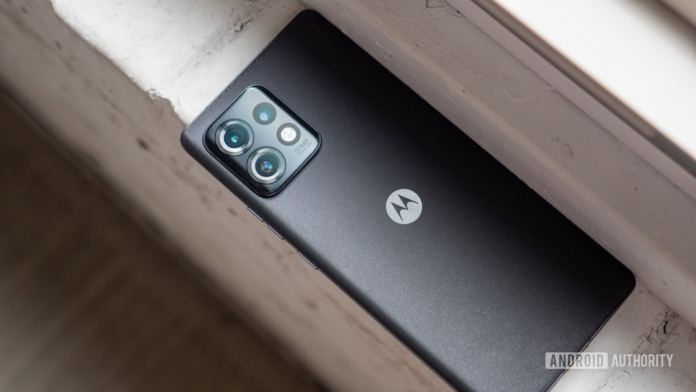Ryan Haines / Android Authority
Of all the Android phone brands on the market today, there’s one company I’ve long had a soft spot in my heart for: Motorola. While far from perfect, Motorola’s history in the Android world has tremendous highs. From the first Moto G revolutionizing budget phones to the resurrected Razr line bringing flip-phone foldables to the masses, Motorola’s impact on Android is undeniable.
That impact is also seen in Motorola’s flagship portfolio. The Moto X series remains one of the most iconic projects, not just for Motorola but also for Android as a whole. Particularly, the first two generations of the Moto X struck an incredible balance of capable specs, unique software features, and unmatched customization. (Moto Maker, I still miss you.)
Motorola didn’t offer a traditional flagship phone in the United States last year, and I’m worried it may make that same mistake again in 2025.
Would you buy a Motorola Edge Plus (2025)? 451 votes Yes 58 % No 21 % Maybe 21 %
Motorola’s flagship excellence
Ryan Haines / Android Authority
The Moto X series is proof of Motorola’s flagship expertise, but that was over a decade ago. A lot has certainly changed since then, but we have much more recent evidence that Motorola still knows what it’s doing in this space.
In May 2023, Motorola released the Motorola Edge Plus (2023). The goal of the Edge Plus was simple: Go toe-to-toe with the Galaxy S23 and Pixel 7 Pro. The Edge Plus offered comparable specs to other flagship Android phones of the time while simultaneously undercutting Samsung and Google in pricing. It was a gamble, but if you ask me, it paid off in spades.
Without a doubt, the Edge Plus was one of my favorite Android phones of that year. It didn’t have the most extravagant or eye-catching design, but the build quality was top-notch. The phone was comfortable to hold and didn’t attract fingerprints in the slightest. It was a very functional design, and it’s one I grew to quite like.
Ryan Haines / Android Authority
The curved OLED panel with a ridiculous 165Hz refresh rate was overkill, sure, but it was also an absolute joy to look at and interact with. That was also helped by buttery smooth performance and a fast, reliable fingerprint sensor. The battery easily lasted for more than two days per charge, and when you did eventually run dry, 68W wired charging speeds got you from 0-100% in less than an hour. Even the cameras —something Motorola had long struggled with prior to the Edge Plus’s release — were solid.
The Edge Plus (2023) wasn’t perfect (the lack of an always-on display was a particularly big annoyance), but the day-to-day experience of using the phone stood out to me more than many other phones from that year. And at $800 with a base storage amount of 512GB, the value proposition was simply unmatched.
Motorola Edge 50 Ultra
Fast forward to April 2024, and it looked like Motorola was on track to do it all over again. The company announced the Motorola Edge 50 Ultra for global markets (not for North America), and the phone had all the makings of a properly exciting successor to the Edge Plus (2023).
The expected spec upgrades were there, including some new camera sensors, a stronger IP rating, a much brighter display, and more RAM/storage. My favorite part, though, was the design. The Edge 50 Ultra was available in a vegan leather finish with your choice of a peach or gray color, plus a “Nordic Wood” option that gave the Edge 50 Ultra a real wooden backside — harkening back to the days of the Moto X. With a price tag that worked out to a little over $1,000 USD, it was hard to find anything to complain about.
Motorola still knows what it’s doing in the flagship space.
I held my breath for the Edge 50 Ultra to make its way to the US. But as April turned to May, then to June, July, and August, it was becoming apparent that wouldn’t be happening. Motorola did release the Motorola Edge (2024) that summer, but it was a decidedly mid-tier handset that left much to be desired.
It’s now April 2025, and the Motorola Edge 60 series is starting to take shape. The Edge 60 Fusion was announced earlier this month, while rumors are building for the Edge 60 and Edge 60 Pro — and we expect the Edge 60 Ultra will pop up sooner or later, too. We don’t quite know what to expect from it yet, but considering how fantastic the Edge Plus (2023) was and how good the Edge 50 Ultra looked, it’s easy to imagine another strong flagship showing from Motorola this year.
The big question, though, is whether or not that’ll translate to another flagship Motorola phone in the US.
Will we ever see another flagship Edge phone?
Ryan Haines / Android Authority
So … will it? I asked Motorola that very question, and a spokesperson from the company said, “We believe that each region is different, and as a result, our portfolio in North America is tailored. Our approach is to think globally and act locally, meaning we assess what’s best for our consumers, products, and markets and make adjustments accordingly.”
In non-corporate speak, that basically translates to a giant “Maybe.” If Motorola releases an Edge 60 Ultra this year, and the company determines the phone makes sense for the US market, we could see a Motorola Edge Plus (2025) this year. But that reality is far from guaranteed.
It’s unfortunate the future of flagship Motorola phones is so uncertain because, even as well-established as the United States smartphone world is — there’s no reason a flagship Edge phone shouldn’t be successful here.
Robert Triggs / Android Authority
Following Apple’s dominant 57% share of the US smartphone market (according to statistics from StatCounter), Samsung follows in second place with over 23%. Behind it at just shy of 4% is none other than Motorola, slightly beating out Google and well ahead of OnePlus’s <1% market share.
While far behind Apple and Samsung, Motorola’s piece of the pie is well-established. The market share numbers are there; the company is a frontrunner in the foldable space, and its portfolio of budget phones — many of which are widely available on most major US carriers — is a dominant force. Motorola has brand awareness and carrier partnerships on its side, two critical keys to success.
It's easy to see how flagship Motorola phones could slot into the US market.
You then combine that with the generally stagnant nature of flagship Android phones in the United States. The Samsung Galaxy S25 series is one of the safest releases we’ve ever seen from Samsung. The phones are good in a bubble, but compared to the S24 series before them (and the S23 series before that), there’s not much to get excited about. Google’s Pixel 9 series is strong, though it has its own set of lingering performance and battery complaints. And as much as I love the OnePlus 13, its absence from any US carrier has made it a decidedly niche choice.
Ryan Haines / Android Authority Motorola Edge Plus (2023)
Looking at things this way, it’s easy to see how flagship Motorola phones could slot into the US market. If you don’t want an iPhone, you really only have Samsung and Google Pixel phones to choose from. OnePlus is there, but it’s not a realistic choice for US shoppers who buy through their carrier — which is most of them. There shouldn’t be anything stopping Motorola from being that proper third choice.
Motorola says it will “continue to evaluate and refine our strategy, assessing what makes sense for our US consumers, products and markets.” If you ask me, new and consistent flagship Edge phones are what make sense for US consumers and markets.
Good for you, me, and Moto
Ryan Haines / Android Authority
Releasing a flagship smartphone is a big decision, and competing against companies like Apple and Samsung obviously isn’t easy. But if a company like OnePlus can keep releasing flagship phones in the US year after year — all while having less than 1% market share and no carrier presence — Motorola should be competing in the space, too.
From a business perspective, there’s a real opportunity for Motorola to see success here. From a consumer standpoint, you and I would have more smartphones to choose from, and competing brands would have a bigger fire under their butt to not put their flagship releases on cruise control. Finally, for a more selfish reason as a longtime Motorola fan, it would be exciting to again see what the company is capable of when it’s not restrained by sub-$300 price tags or expensive folding mechanisms.
Motorola is 'committed to enhancing and evolving the Edge family in North America.'
In another quote Motorola gave me, the company reassures it is “committed to enhancing and evolving the Edge family in North America, and providing consumers with options at multiple price tiers.”
While far from confirmation that another flagship Motorola Edge phone is on the way, I want to think it’s a tease that one is coming. At least, I hope so. Releasing a new Edge Plus in the U.S. this year would revitalize the flagship space in more ways than one — and not doing so would be a huge miss and mistake.



